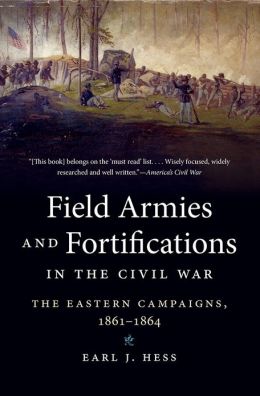Carol Reardon and Tom Vossler
University of North Carolina Press, 2013, 454pp., $22.00
ISBN: 978-0-8078-3525-8
Image courtesy of amazon.com
Released for the 150th Anniversary of the Battle of Gettysburg, A Field Guide to Gettysburg written by Carol Reardon and pictures taken by Tom Vossler, offers a unique view into the battle. While other Gettysburg Guides have offered in depth looks into the areas outside of Gettysburg, including the retreat from the field and the cemeteries in the borough, A Field Guide to Gettysburg gives an in depth look into the battle itself including many details on the days of combat not going outside the realm of the battle. What Reardon has done is written a narrative split into three parts for the different days of combat including an analysis of the land and the regiments of the field.
Carol Reardon is an accomplished historian and teaches at Pennsylvania State University. In the past, she has taught at West Point and the United States Army War College. She also offers many staff tours all over Gettysburg for both groups of civilians and military personnel. Her other works include Pickett’s Charge in History and Memory and With a Sword in one hand and Jomini in the Other. Tom Vossler is a combat veteran and is retired from the army as a U.S. Colonel. He is the former director of the United State Army Military Institute and is a licensed battlefield guide.
As stated before, there are many guide books to the battlefield of Gettysburg. For the most part, they are needed since most people are lost on the field when they are not well versed in Civil War knowledge. Each guide is different and offers something new to the realm of field guides. One thing which separates this guide from others is the in depth narrative which Reardon has provided and has greatly organized so the guide could be used on the battlefield. As each stop is mentioned, there are seven sections to the area. It begins with the orientation of the area surrounding you, and then a description about what happened there. Though all stops may not have all seven sections of the narrative, these two parts are always present in the guide. The other sections which may be part of the stop description are “who commanded here,” “What did they say about it later,” “who fought here,” “who fell here,” and “who lived here,” just to name a few. Throughout these narratives, the reader gets a feeling that the general knowledge of Gettysburg is superseded than what they knew before. What this guide does for the seasoned Gettysburg historian is add more depth into areas they may not understand as well as other sections of the battlefield. My first use of this guide was to help me understand what happened at East Cavalry Battlefield. When I arrived on that field, without the guide, I would have been completely hopeless. But with the guide in hand, the amount of knowledge I gained is unmatched from any other guide I would have brought with me on the field.
A Field Guide to Gettysburg is highly recommended to anyone visiting Gettysburg for the first time, or the seasoned Gettysburg historian. The narrative by Reardon is unmatched in the realm of academia and the photographs taken by Tom Vossler are excellent. When I met both Reardon and Vossler at Gettysburg, they told me that they were able to be one of the first people in the cupola of the Lutheran Theological Seminary to take last minute pictures for this guide. This is the kind of devotion they poured into the writing of this book. A Field Guide to Gettysburg was the winner of the 2013 Bachelder-Coddinton Literary Award and it is well deserved.








 RSS Feed
RSS Feed
